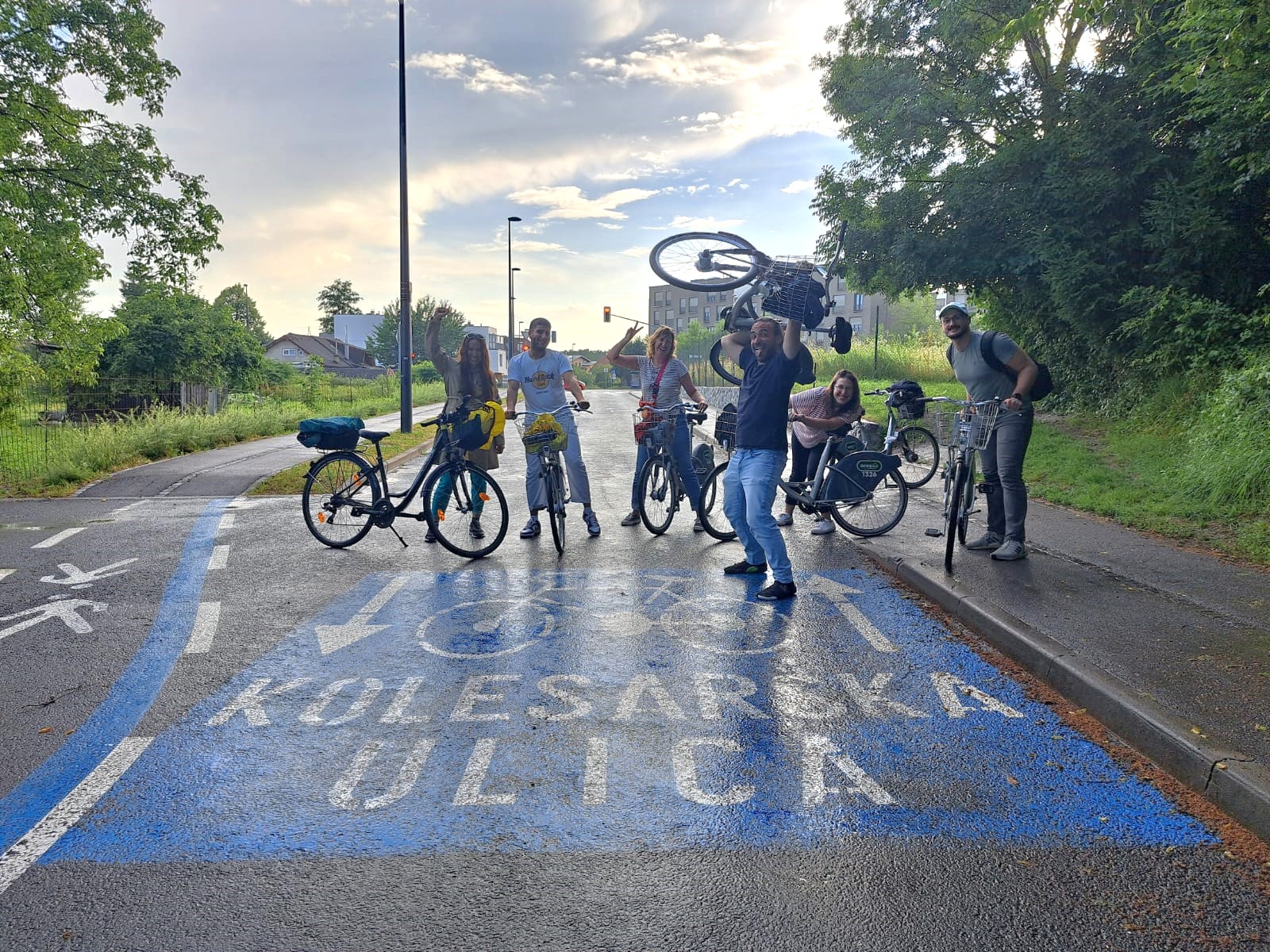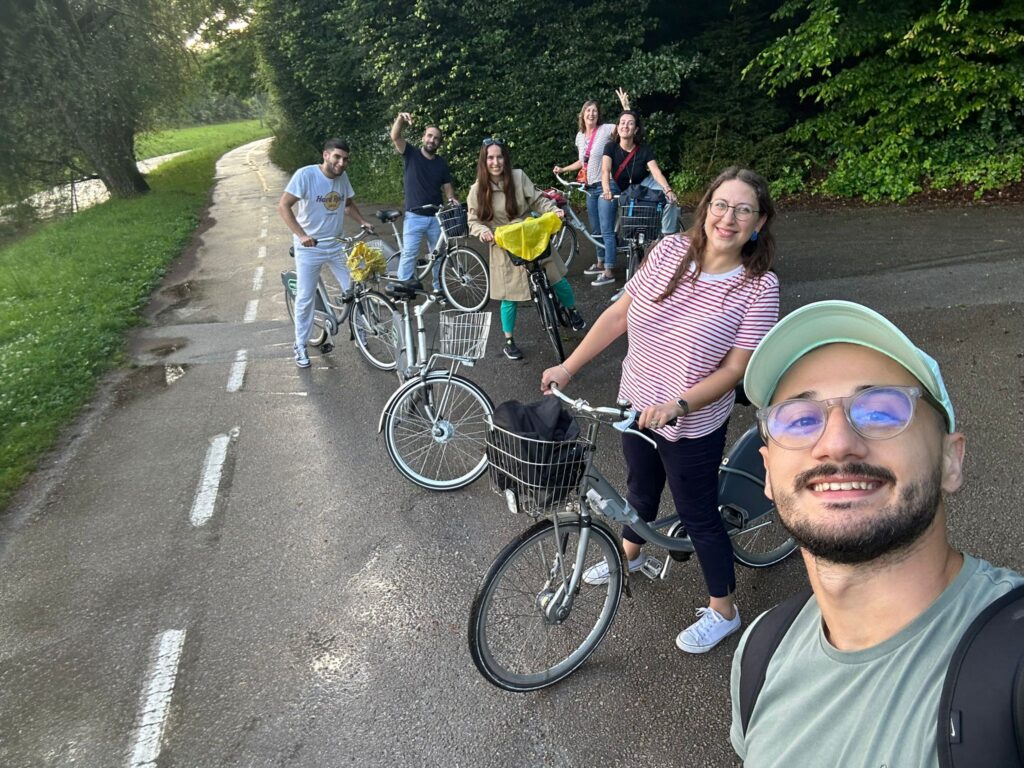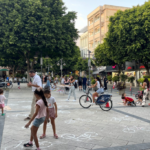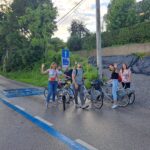
Exploring micromobility innovation in Ljubljana
From June 24–28, 2024, representatives of the MICROMOBI project gathered in Ljubljana, Slovenia, for an enriching Learning, Teaching, and Training Activity (LTTA). The aim of this event was to explore Ljubljana’s pioneering micromobility model and uncover practical insights to promote sustainable transport systems in our own countries. Ljubljana, with its extensive cycling infrastructure and pedestrian-friendly city center, served as the perfect living laboratory for this mission.
Discovering Ljubljana: A Micromobility Success Story
The capital of Slovenia is well known for its walking and cycling-friendly policies, as it boasts the largest pedestrianised urban area in Europe and has successfully managed to grow the modal share of cycling as a mode of transport. The city is investing in more infrastructure, such as separated bicycle lanes and cycling streets, offering safe spaces for pedestrians, cyclists, kickscooters and other micromobility, such as wheelchairs and mobility scooters. The city thinks about different people and their needs: their ‘Kavalir’ free electric taxi is available to anyone who can’t walk to provide access in and across the pedestrian area, and there are many spaces for play and enjoyment, inviting families with children into the city.
Ljubljana is a city that exemplifies the power of transformative urban mobility. Over the past two decades, it has evolved into one of Europe’s most cycling-friendly cities, with over 300 kilometers of cycling paths and a pedestrian-only city center that spans 17 hectares. This commitment has reduced carbon emissions by 70% in pedestrianized areas and earned Ljubljana accolades like the European Green Capital in 2016 and the Best Green Capital award in 2021.
The city’s bike-sharing program, BicikeLJ, introduced in 2011, has been another significant milestone. With 840 bikes spread across 84 stations, it has become a symbol of sustainable mobility. The program recorded over 9.1 million rentals as of 2022, proving the demand and appeal of affordable and accessible micromobility options.
A Packed Agenda of Learning and Exploration
Our LTTA activities in Ljubljana included workshops, site visits, and engaging discussions.
We were introduced to the city’s micromobility initiatives through an immersive walking tour, exploring the pedestrianized streets and cycling infrastructure. The visit showcased Ljubljana’s balance between urban vibrancy and environmental sustainability.
Participants attended workshops on the concept of micromobility, focusing on European best practices, road safety, and the principles of sustainable urban planning. Later, we explored the city’s bike-sharing infrastructure and cycling-friendly areas, capturing insights through videos and photos.
A technical walking and cycling tour revealed both the successes and challenges of Ljubljana’s micromobility framework. Discussions led by experts highlighted the need for continuous improvement, especially in addressing conflicts between different road users and enhancing public engagement.
Lessons Learned and Takeaways
Ljubljana taught us that the transition to micromobility requires bold policy decisions, strategic urban planning, and strong community involvement. Key takeaways from the training included:
Infrastructure Matters: Safe and dedicated cycling paths are essential for encouraging micromobility. Ljubljana’s decision to enable cycling on one-way streets and its investment in bike parking facilities have made a significant difference.
Public Engagement is Crucial: The success of Ljubljana’s cycling culture stems from grassroots initiatives like the Ljubljana Cycling Network (LKM), which advocates for sustainable transport and involves residents in the decision-making process.
Micromobility for All: Special attention is given to vulnerable groups, including women, the elderly, and children. Programs like cycling workshops for women and seniors demonstrate how micromobility can empower communities.
Inspiring Change in Our Cities
The lessons from Ljubljana serve as a blueprint for fostering micromobility in our partner countries -Malta, Cyprus, Italy, and Slovenia. By adopting similar measures, we aim to reduce car dependency, enhance road safety, and create more livable cities. The MICROMOBI project will continue to raise awareness and share best practices through workshops, campaigns, and online resources.
As we reflect on our time in Ljubljana, one thing is clear: micromobility is not just a mode of transport -it’s a movement towards healthier, greener, and more connected communities. Together, we can turn this vision into reality.






Leave Comment